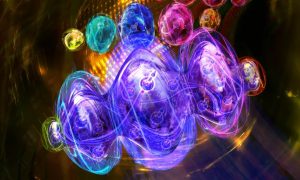Supersolids are fluid and solid at the same time. In jointly collaboration work, together with Thierry Giamarchi, theoretical physicist from the University of Geneva, we have for the first time investigated what happens when such a state is brought out of balance.
We discovered a soft form of solid of high interest for science. As we report in Nature Physics, we were also able to reverse the process and restore supersolidity. In Nature Physics, we report how such a supersolid state reacts if the superfluid bath between the droplets is drained by control of the external magnetic field. We were able to show that without the bath the droplets quickly lose knowledge about each other and start to behave like small independent quantum systems – they dephase. The supersolid turns into a normal solid. This ‘solid’, however, is still soft, it can wobble and support many collective excitations, called phonons. This makes this state a very interesting but complex subject of study with strong connections to solid-state physics and other fields.
Maybe surprisingly, we were also able to reverse this dephasing process: When we replenished the background bath, the droplets renewed their communication by particle tunneling and re-established supersolidity.
The research was financially supported by the Austrian Science Fund FWF, the Federal Ministry of Education, Science and Research, the Swiss National Science Foundation and the European Union.

